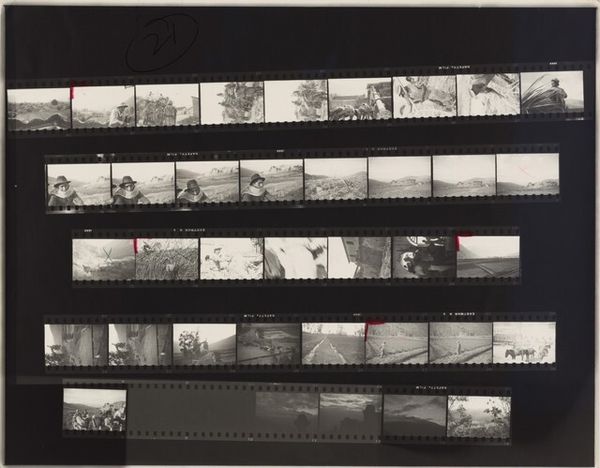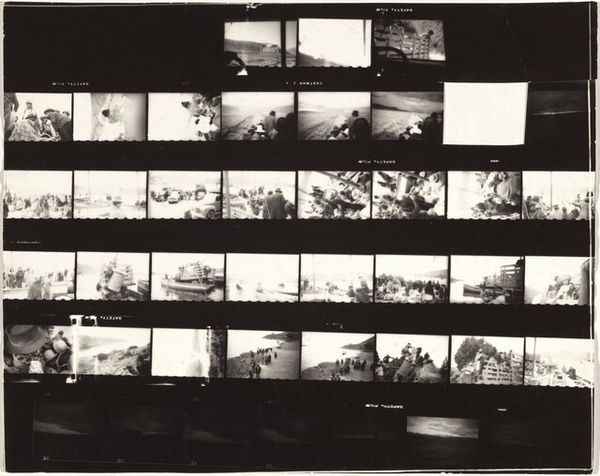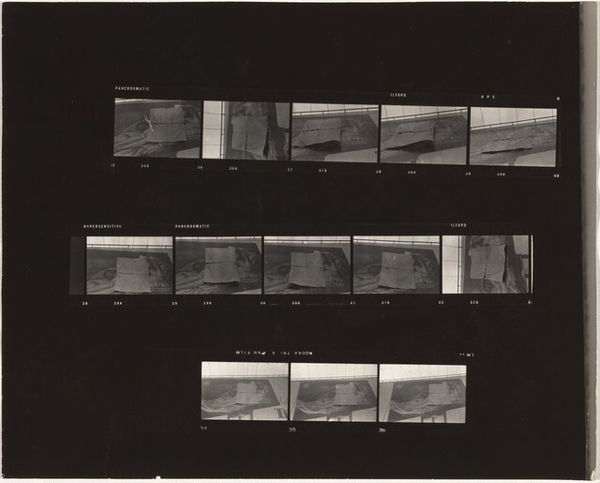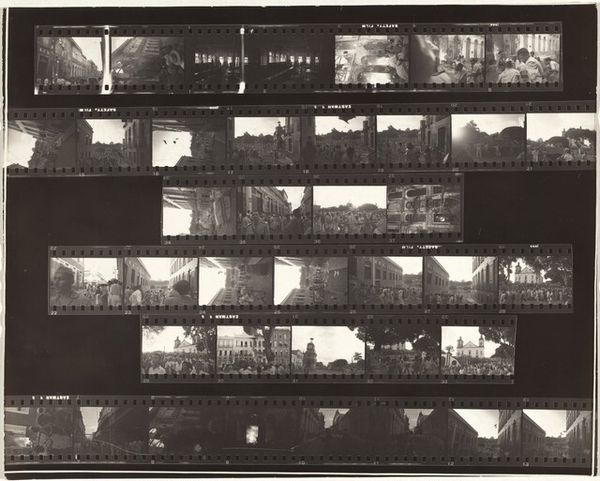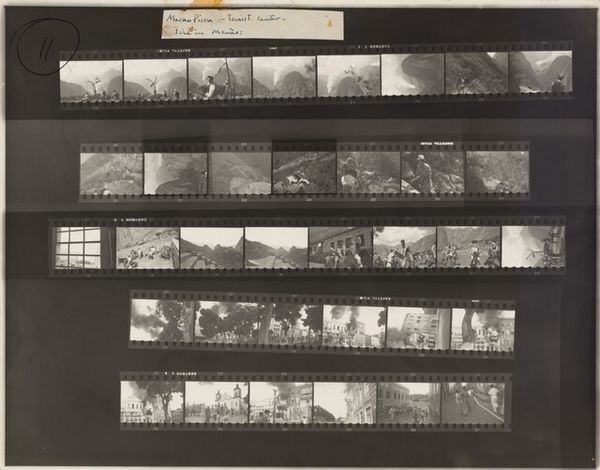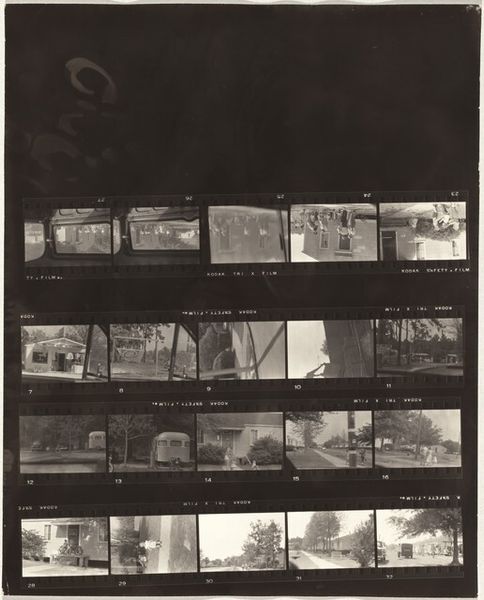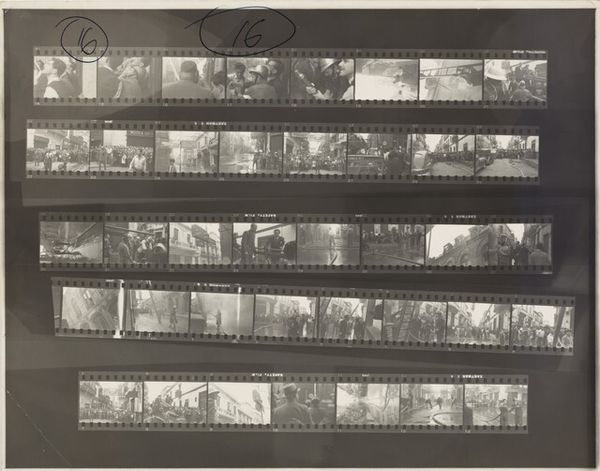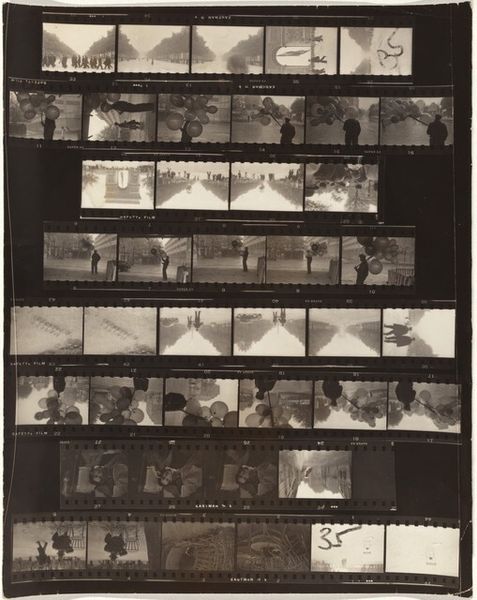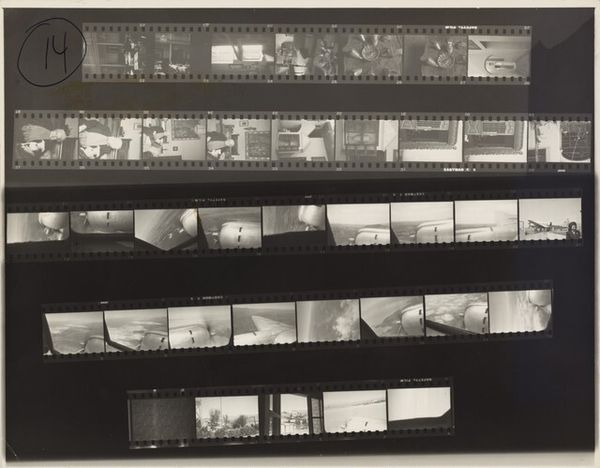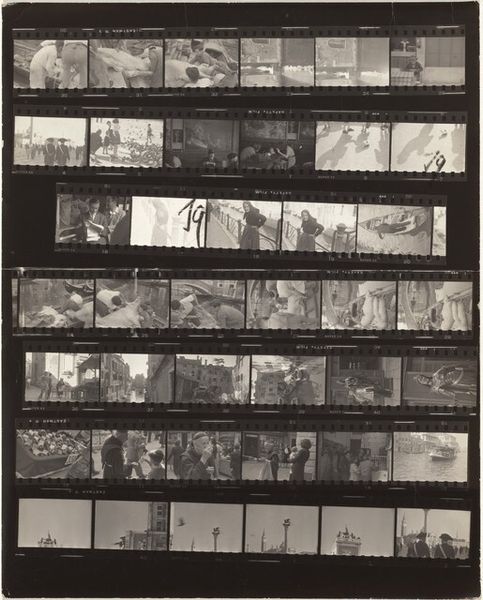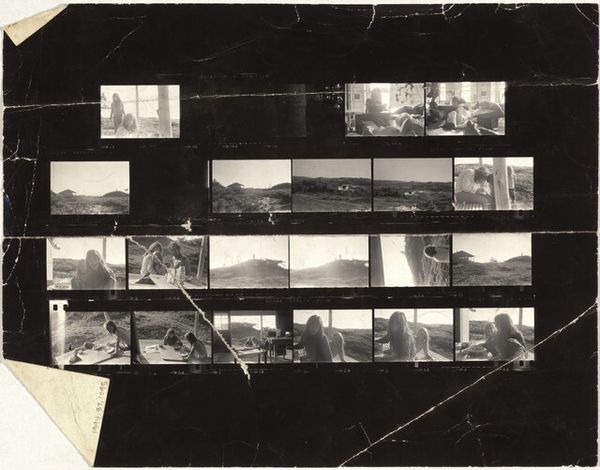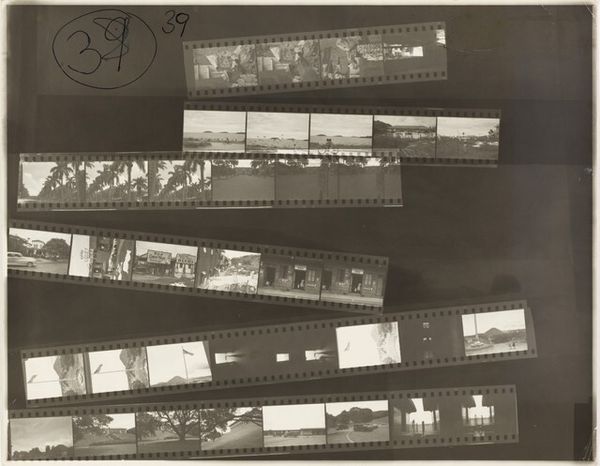
#
excavation photography
#
photo of handprinted image
#
natural shape and form
#
pale palette
#
organic shape
#
sculpture
#
unrealistic statue
#
carved into stone
#
pale shade
#
shadow overcast
Dimensions: sheet: 27.8 x 35.4 cm (10 15/16 x 13 15/16 in.)
Copyright: National Gallery of Art: CC0 1.0
Curator: Here we have Robert Frank’s “Peru 12,” taken in 1948. It's presented as a contact sheet, which shows multiple frames from a roll of film. What's your immediate impression? Editor: Bleak, almost desolate. It's fascinating seeing these strips of images together; the grey tonality creates a uniformity across various landscapes, suggesting a thread of commonality, perhaps struggle. It’s interesting to see his edits. Curator: Absolutely. Frank’s choice of printing the contact sheet elevates what would typically be a utilitarian artifact. It transforms the proof of the photographic process itself into the final art object, thus highlighting the artistic and physical journey of the work itself. It is really amazing what you can find on it such as writing and Xs. Editor: Agreed. Presenting the contact sheet implicates us in his editing process, which seems incredibly raw, more documentation of labor. There is an appeal here; by exhibiting what’s usually hidden or deemed imperfect it elevates that into high art. Are these mountains from Peru or the lives of those who live there? Curator: His work does push boundaries like that, between "high art" and everyday life. I am interested to see how, across this work, there is some cultural and political awareness being expressed, even at this stage in his career. But, also this shows Frank’s search for…what do these photographs collectively represent for him as images? Editor: Do you think presenting this as ‘art’ hides the raw material, erases the social context, or instead brings it forth? Because looking at the strips themselves and their silver gelatin, reminds me so much of a dark room! It becomes less a document of experience and more an act of crafting and sculpting light. Curator: I see your point. Perhaps it’s both? He makes the photographic real more visible but invites the viewer to consider more. The film, the mountains...it invites deeper symbolic readings. It also forces viewers to acknowledge art-making processes alongside the images' emotional content. Editor: Well, I certainly feel more informed having considered it, thinking more about labor that makes this particular art possible. Thanks.
Comments
No comments
Be the first to comment and join the conversation on the ultimate creative platform.
